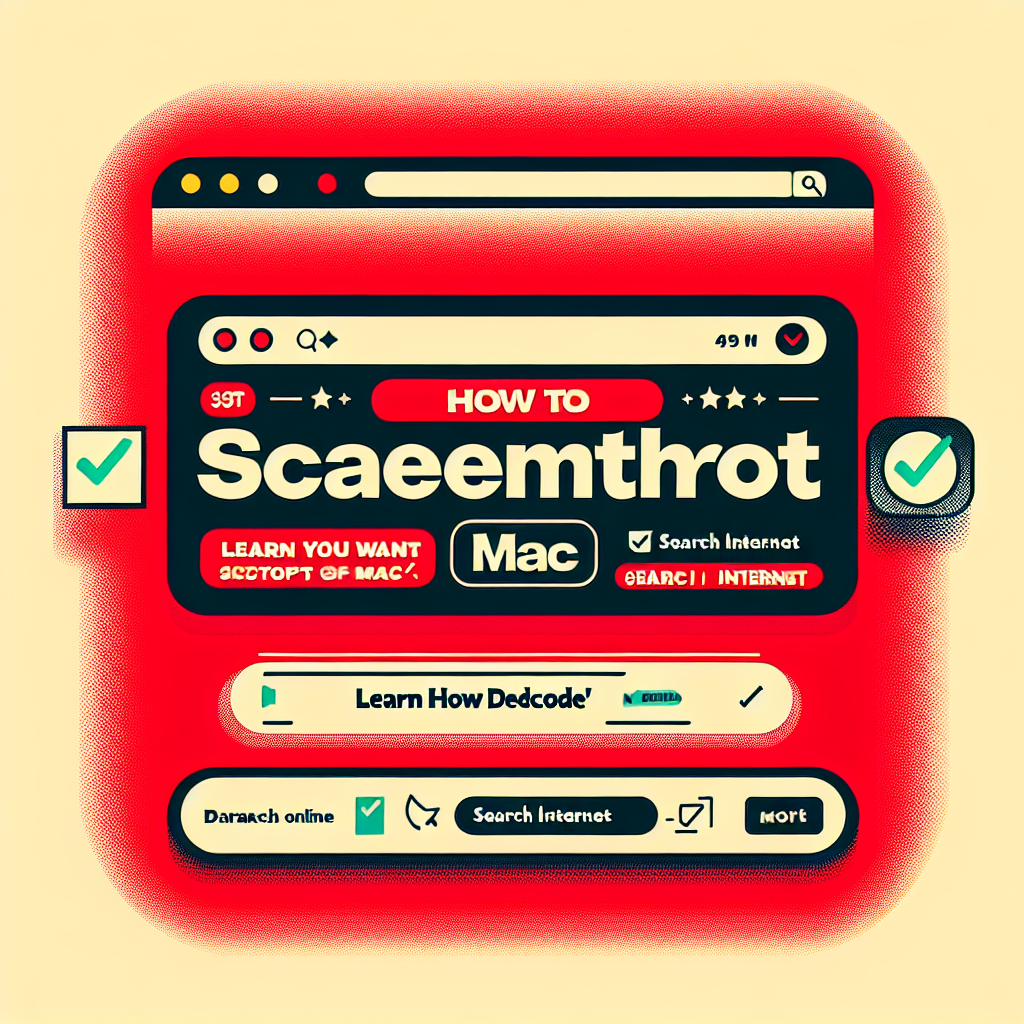“`html
Capturing a screenshot on a Mac might seem straightforward, yet many users feel overwhelmed by the different options. Whether for work, sharing ideas, or saving special moments, mastering how to screenshot on Mac is a vital skill in today’s digital world. This guide will make the process simple, enabling you to get the hang of it in just a few minutes.
Why Screenshots Are Important
Screenshots play a crucial role in communication, both personally and professionally. They help us share information quickly, document problems, or save essential data without needing extra apps or tools. With just a few clicks, you can capture anything on your screen, providing a handy visual reference. Therefore, knowing how to screenshot on Mac is not just useful but essential.
The Confusion: Navigating Different Techniques
If you search for ways to take a screenshot on a Mac, you’ll likely find a variety of keyboard shortcuts, settings, and applications, leading to confusion. You may ask yourself, “Which method should I choose? Are keyboard shortcuts better than apps?” This guide is designed to answer these questions, empowering you to capture screenshots effectively and easily.
Getting Started: Basic Methods for Screenshots on Mac
Taking a screenshot on a Mac is pretty simple once you learn about the available options. Here’s a clear overview of the different methods:
Keyboard Shortcuts: The Quickest Way
Using keyboard shortcuts is the simplest and fastest way to take screenshots on a Mac. Here are the main combinations to remember:
1. Capture the Entire Screen
- Shortcut: Press
Command (⌘) + Shift + 3 - Outcome: This captures everything visible on your screen, with the screenshot saved directly to your desktop.
2. Capture a Selected Area
- Shortcut: Press
Command (⌘) + Shift + 4 - Outcome: Your cursor changes to a crosshair. Click and drag to select the area for your screenshot; release to capture.
3. Capture a Specific Window
- Shortcut: Press
Command (⌘) + Shift + 4, then tap theSpacebar - Outcome: The cursor turns into a camera icon. Hover over the window you wish to capture and click.
4. Capture the Touch Bar (if applicable)
- Shortcut: Press
Command (⌘) + Shift + 6 - Outcome: This captures what’s on the Touch Bar if your Mac includes one.
Using the Screenshot App: More Features at Your Fingertips
macOS includes a Screenshot app that offers additional options for capturing and editing screenshots. Here’s how to get started:
- Open the Screenshot App: Use
Command (⌘) + Shift + 5 - Available Options:
- Capture the full screen
- Capture a specific window
- Capture a selected area
- Record your screen
- Additional Preferences: You can set a timer, choose a different save location, and even show or hide the cursor in the screenshot.
Saving and Sharing: Where Do Your Screenshots Go?
By default, screenshots are saved to your desktop with filenames that include the date and time they were taken. If you’d like to change where they’re saved, follow these steps:
- Open the Screenshot app using
Command (⌘) + Shift + 5. - Click “Options.”
- Select a different folder from the dropdown or create a new one.
Tips for Effective Screenshots
To make your screenshots both useful and visually appealing, keep these tips in mind:
1. Consider the Resolution
High-resolution screenshots will be clear and sharp. When sharing images with clients or colleagues, clarity is key to conveying professionalism.
2. Use Annotations Wisely
After taking a screenshot, you can use Preview or built-in annotations to add arrows, text, or highlights to emphasize important details.
3. Use Descriptive File Names
When saving multiple screenshots, use names that help you easily identify their contents (e.g., “Project_X_Revision_1”).
Real-Life Applications of Screenshots
Screenshots have various practical uses—here are a few examples:
- In the Workplace: Share design drafts, bug reports, or significant documents with your team.
- In Education: Capture online tutorials or resources for later use.
- For Social Media: Share your favorite moments or posts with friends and followers.
FAQs: Your Quick Reference
Q1: How can I take a screenshot on a Mac without saving it directly to the desktop?
You can hold Control along with any of the screenshot shortcuts to copy the screenshot to your clipboard, rather than saving it directly. For instance, use Control + Command (⌘) + Shift + 3 to capture the entire screen into your clipboard.
Q2: Is it possible to edit screenshots right after taking them?
Absolutely! After capturing a screenshot, a small thumbnail will appear in the bottom right corner of your screen. Click on it to start editing, where you can annotate, crop, or share immediately.
Q3: What if my Mac isn’t responding to the screenshot keys?
Make sure your macOS is updated, as outdated software may affect functionality. Restarting your Mac could also resolve temporary issues.
Q4: Are there apps available for more advanced screenshot options?
Yes! Tools like Snagit or LightShot offer enhanced features such as scrolling screenshots, better editing capabilities, cloud storage, and more.
Conclusion: Next Steps
Now that you’re familiar with different methods for taking screenshots on a Mac and have a range of techniques at your disposal, it’s time to practice! Start capturing your screen to document vital information, improve presentations, or share enjoyable moments with friends. Embrace this skill and transform how you interact digitally.
For more tips on enhancing your Mac experience, check out our other articles on Mac productivity tips and troubleshooting common Mac issues. Happy screenshotting!
“`



